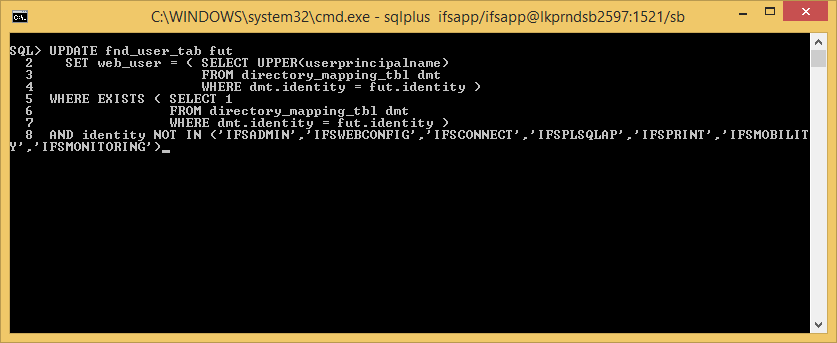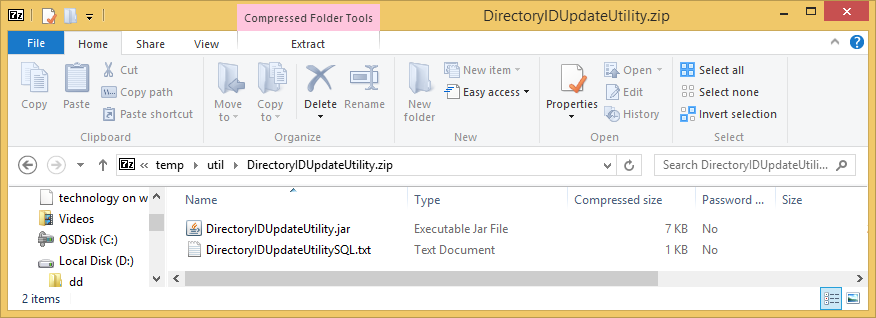
As of IFS Applications 10 the link attribute between IFS Applications and Active Directory will be the "userPrincipalName" instead of of "sAMAccountName" as was the case in some earlier versions. This means that there may be a need to transform data in the FndUsers-table. This transformation is easily achieved if Active Directory User Integration is in use as described here. For customers not using Active Directory User Integration, a small utility has been developed as an aid in the transformation process.
Before using the utility, a number prerequisites must be met. First of all, you must verify that a transformation of the data is necessary, i.e. that the DirectoryID-column contains Active Directory sAMAccountNames. Having verified that, you need to find out information about the Active Directory such as the URL, credentials of a user who has read access and last but not least the LDAP search string to use, typically on the format "CN=Users,DC=corp,DC=domain,DC=com", when querying for users.
In addition, you also need an Oracle JDBC-driver (ojdbc7.jar), the APPOWNER's username and password and the database connect string on the format "hostname:port/servicename".
The utility is a zip-file containing two files: one file containing SQL statements to create necessary mapping table and an update statement will transform the actual data in the users-table and one jar-file which connects to the Active Directory and fills the mapping table with the new values.
Note that you must verify that the resulting data in the mapping table is valid before updating the users-table.
The contents would like the picture below and the zip-file can be downloaded from here.

As mentioned above, the update process requires access both to the Active Directory and the IFS Applications database. It is required to use application owner (APPOWNER) credentials in order to create and load temporary table(s) and updating the FndUser-table.
Start the process by extracting the zip-file to a directory of your choice. Locate an Oracle JDBC driver (there is one in <IFSHOME>/repository/server/javaruntime/ojdbc7.jar).
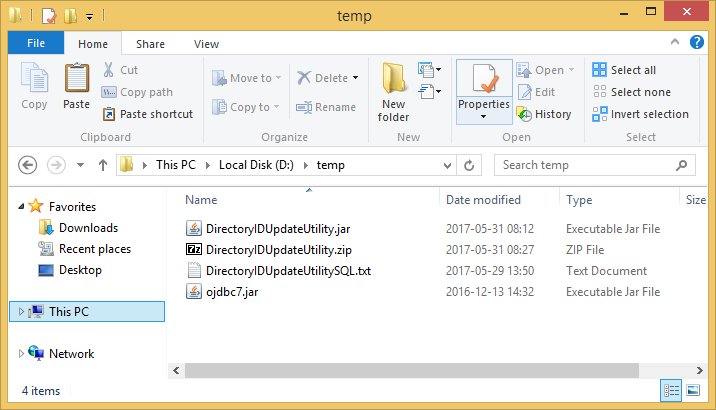
Next step is to start a SQL*Plus session towards the IFS Applications database and create the database objects. Open the file called "DirectoryIDUpdateUtilitySQL.txt" containing SQL-statements that you can copy and paste. Start by creating a backup of the users table, then create the temporary mapping table.
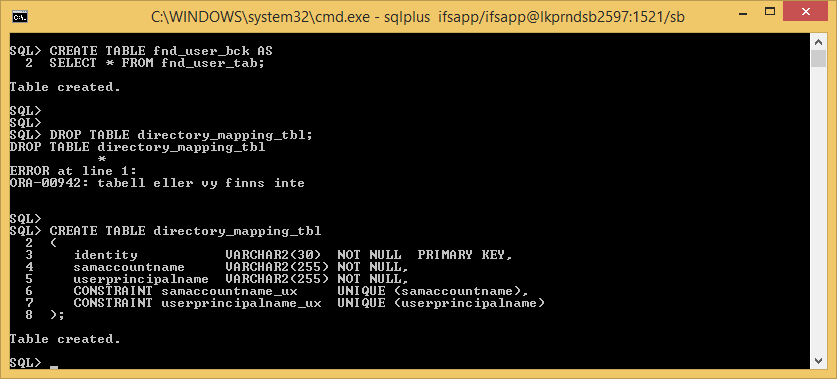
Continue the process by running the Java-based utility. Note that, except for the utility jar-file itself, you must have the Oracle JDBC driver on the classpath. Fill in your details when prompted like in the example below.
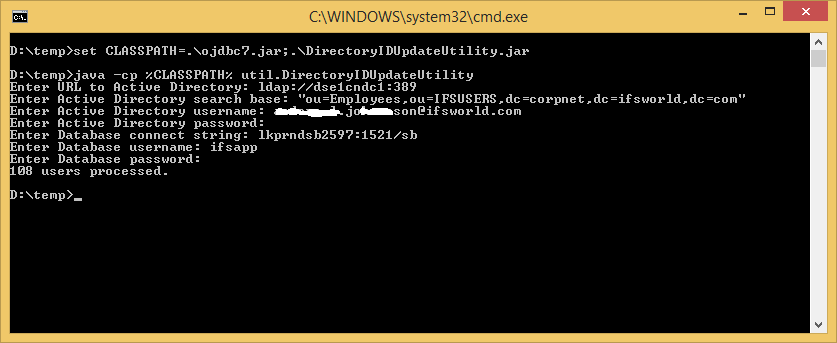
When the program is finished, return to your SQL*Plus session and carefully study that the result looks reasonable.
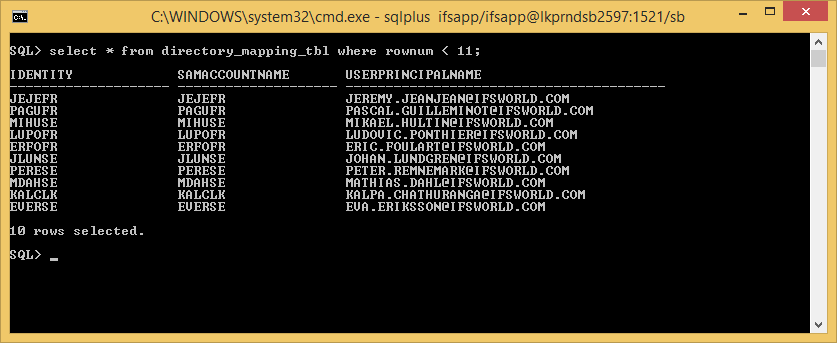
If everything seems to be in order, you can go ahead and update the user-table.
